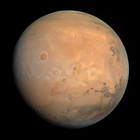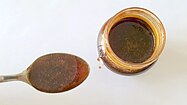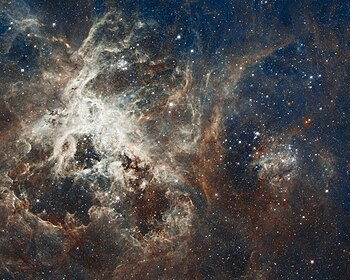User:MarSch/Main body
Today's featured article[edit]Mars is the fourth planet from the Sun. It was formed approximately 4.5 billion years ago, is a terrestrial planet and is the second smallest of the Solar System's planets with a diameter of 6,779 km (4,212 mi). A Martian solar day (sol) is 24.5 hours and a Martian solar year is 1.88 Earth years (687 Earth days). Mars has two small and irregular natural satellites: Phobos and Deimos. Carbon dioxide is substantially present in Mars's polar ice caps and thin atmosphere. It has the highest mountain in the solar system, Olympus Mons, and the largest canyon, Valles Marineris. There are large annual temperature swings on the surface, between −78.5 °C (−109.3 °F) and 5.7 °C (42.3 °F) – similar to Earth's seasons. Due to its geological history, the possibility of past or present life on Mars remains of great scientific interest. Mars has been explored by uncrewed spacecraft and rovers, and is an attractive target for future human exploration missions. (This article is part of a featured topic: Solar System.)
Recently featured:
Selected anniversaries[edit]May 14: Feast day of Saint Matthias (Catholicism); Independence Day in Israel (2024)
|
In the news[edit]
Did you know...[edit]
Today's featured picture[edit]The Tarantula Nebula, also known as 30 Doradus, is a large H II region in the Large Magellanic Cloud (LMC). It is one of the largest H II regions in the Local Group, with an estimated diameter around 650 to 1860 light years. It is around 160,000 light-years from Earth and has apparent magnitude of 8. The Tarantula Nebula was first observed by Nicolas-Louis de Lacaille during an expedition to the Cape of Good Hope between 1751 and 1753. This high-resolution photograph was taken by the Hubble Space Telescope and shows the star-forming region of Tarantula Nebula with the R136 super star cluster at its center.Photograph credit: NASA, ESA, Space Telescope Science Institute
|





